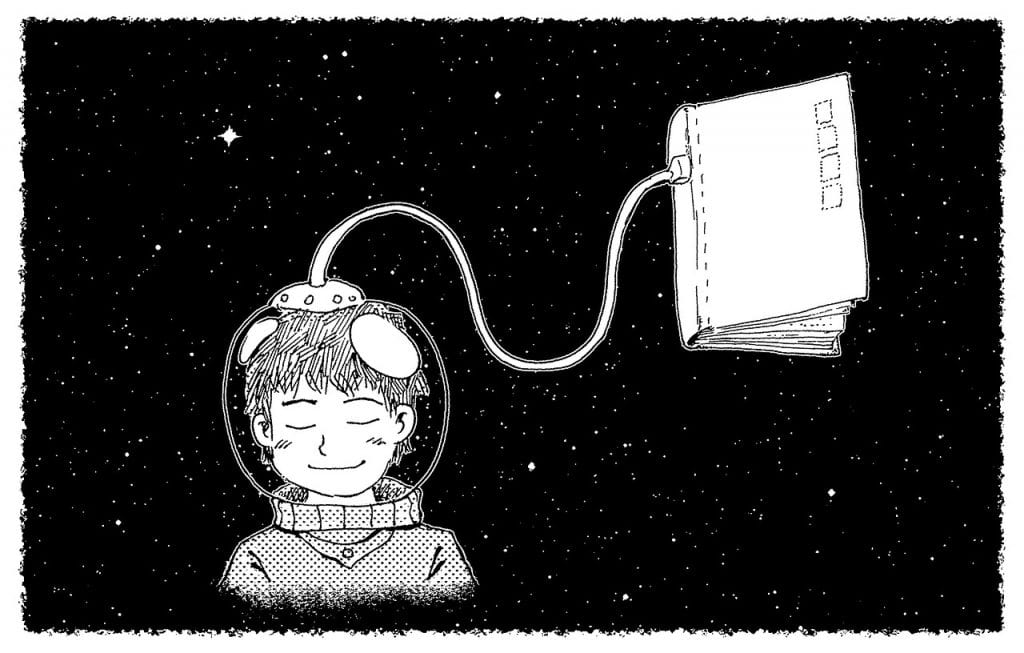How to Write A Book With Brain Dump Audio Recordings

Rev › Blog › Transcription Blog ›
Writing a book is not as simple as getting your ideas down on paper or into a word processor. Typing or writing by hand, you won’t be able to keep up with the speed of your thoughts running through your mind. Transferring the contents of your head into a cohesive book begins before the first draft. Brain dumps are an essential part of an effective book writing workflow.
There are several ways to unload information through a brain dump. You can jot down bullet points or keywords, or record your thoughts out loud and dictate what’s on your mind. You’ll want to block out on-screen distractions and keep your inner editor in check. Dictation enables you to enter an ideal flow state or a steady stream of consciousness.
We’ll show you how to achieve impressive results using this brain dumping method. But first, let’s clarify: what exactly are brain dumps and how do writers use them?
What is brain dumping?
A brain dump seeks to empty your mind without losing any thought or information you hold inside. Imagine a box of clutter: you won’t be able to sort through, make sense of or work with what’s inside if you don’t take it out. A brain dump does exactly that: it clears your mind while making the contents of your head accessible. As a result, you can be more productive, focused and organized. This productivity hack can jumpstart creative projects such as writing your book. You can use brain dumps to guide your writing process or inform future mind map and brainstorm activities.
Why record spoken brain dumps as part of the writing process?
There are many benefits to audio brain dumps and writing your book with dictation and transcripts. Recordings let you create anywhere. Unlike with typing or writing by hand, you can avoid strain on your eyes, hands, and back. You can lose the inhibition of the blank page staring back at you and rid yourself off the nagging temptation to edit as you go. Speaking your thoughts is much better suited for capturing spontaneous ideas and flow, stream of words and natural dialog.

It’s also a tremendous time-saver. Typing and thinking at the same time slow down your output. Recording yourself at average conversational speed yields approximately 150 words a minute. With a word-for-word transcript, you can then revisit all the details of your ideas. Speech-to-text technology is a true game-changer for authors of fiction and non-fiction alike. It enables you to optimize your workflow with efficient brain dumps and increase your productive output.
How to brain dump for writing a book
If you don’t know how to start writing a book, listen to successful authors: brain dumps with recordings and transcriptions are the fastest way to write a book! Our writing tips will help you use the brain dump method effectively in your writing process to get your ideas out of your head.
1. Start with an Overview
Most successful works of fiction boil down to a small number of master plots. These story archetypes give you an overview of plot points or story beats you can talk through. They don’t have to be in order at this point, your transcript will help with that. You can also approach your manuscript with the classic three-act-structure. From the initial setup and a resolution in the end, you can develop the key events of the bulk of the story in the middle. Discover the confrontation through speaking and recording your thoughts.
For non-fiction writers, a book overview is equally essential. Brain dump to stake out the expanse of the ground your book will cover. Think of your title or central aspect to talk through all the topics and issues you want to include. At this stage, don’t filter and don’t impose any order. It’s okay to wander, you will introduce structure later. An overview is not (yet) an outline!
2. Interviews
Interviewing your characters or giving them a voice by speaking from their perspective is a great way to get into their heads. Every story needs conflict. Have a clash between two characters, as in hero vs. villain, or give a character obstacles to overcome. Talk to your characters through questions. What is their want vs. their need, what drives them, and how do they react to events in the story? Are they passive or proactive, good or evil? Record their role, motivation, backstory, behavior, speech, appearance, and mannerisms, and you’ll be able to have them come to life on the page.
Interviews will also provide substantial material when writing about other subjects. Quiz experts in the field on their knowledge and make sure you have all the information you need with a full-length audio recording. In case you yourself are the expert, switch to the reader’s perspective and talk through the questions they will want your book to answer for them.
Interviews are a great way to bring your novel’s characters to life or gather substantial information from experts for your non-fiction book.
3. Sketch chapters or scenes
Sketching works for fiction and non-fiction alike. It’s a useful tool to battle writer’s block. A sketch is a quick description of what you’re going to write later: the backdrop of a scene, a rough dialog outline, a conflict in shorthand. You can write “the hero delivers an awesome comeback line” without yet knowing what it’ll be. After this brain dump, you can repeat the exercise and go over more details of the scene. Include rich features, surroundings and secondary characters, or stimulate all senses in glorious descriptions of the environment.
When you’re not telling a fictional story, sketching a chapter with the brain dump method will focus you on what you want to deliver at this particular moment. What knowledge should your readers have at the end of the chapter, and how will you build on what came before?
4. Interpret the Research
Thorough research is key to writing your book. If your fiction is set in a particular historical era or if you write in a certain genre, you want to get the details right. Your readers will only immerse themselves in the world of your story if your construction holds up and all the pieces fit together. In non-fiction, you need to support your arguments with well-founded facts and figures.
You’ve likely gathered information sprawling over books, articles, newspapers, printouts, bookmarks and lots of browser tabs. Being exposed to everything at once is overwhelming, so tackle it bit by bit. Skim through your research with audio recordings and highlight key points and their importance for your reader or the story. Talk about how certain facts relate to your characters or the reader’s problem that your book will solve.
5. Organizing the Outline
Your brain dumps will help you with the question of how to write a book outline for your project. The transcripts of all your recordings will guide you in the process. Sort your plot points or story beats in the right order to arrive at the arch of your story, the ups and downs your characters will experience on their journey. You can outline a non-fiction book by grouping things by topic or have the different sections of the book build upon one another. It can be helpful to divide your informational book into different parts. Another brain dump for your book outline enables you to identify possible holes or missing items before you start with individual chapters. When you compose your first draft, your outline serves to keep track of where you are.
What are the best practices for brain dumps?
There’s hardly any threshold to successful brain dumping, but the following tips make the method even more effective:
1. Focus on one topic at a time
Brain dumps that cluster around one idea or topic keep you focused and deliver more cohesive and concentrated results. You don’t need to quell sporadic ideas, because you can always continue with another brain dump to hone in on your previous tangents (also see tip #4).
2. Limit yourself to a set amount of time
Working in sprints is a potent productivity hack. The principle also applies to brain dumps. Set a time limit to avoid rambling, circular reasoning or getting stuck in thought loops. As with the pomodoro technique, intervals feed your flow and focus. Experiment to discover your ideal length. 5-10 minutes can be enough for sketching. Outlines, interviews or research interpretation might need longer brain dumps of 15-25 minutes.
3. Refine and repeat
You’ll soon discover which variation of the brain dump method yields the best results for you. It could be that you need to sketch before a writing session. Or you do several brain dumps in a row until an idea has crystalized. Maybe you only need to resort to dictation when you’re hit by writer’s block. Remember that approaching the process this way is better than staring at a blank page. To refine, measure and track your results as total output of words, time spent writing or in focus, or words per hour.
4. Keep pen and paper close
Audio recordings let you empty your mind hands-free. You can pace, sit, lie down, or walk at the same time and record anywhere. Even though it’s faster than writing by hand, keep pen and paper ready in case anything comes up. As we’ve mentioned above, you should stay on target, but don’t kill spontaneous thoughts. Instead of getting distracted, jot them down in a few words and come back to them in the next brain dump iteration.
5. Order Transcripts of Your Brain Dump Recordings
As we’ve already established, recording a brain dump is a double-time saver. This method will boost your productivity, and speaking out loud is faster than writing by hand. On top of that, speech-to-text unlocks the full potential of brain dump recordings. Don’t waste time sorting through or listening to your spoken audio. Our transcription service provides you with an accurate transcript of your recordings for only $1 a minute. After a quick turn around, you can work with a convenient text file and get started on your book project, chapter or outline.
Harness the power of brain dumps with recordings and transcripts
So how do you begin writing your book? Try the brain dump method for fiction or non-fiction writing. Tackle and then organize your ideas one by one. Refine and repeat the brain dumping method to structure and direct the information into your writing process. As you form a habit this way, you’ll supercharge your productivity. Get your recordings transcribed by Rev for only $1 a minute, increase your output and defeat writer’s block!
